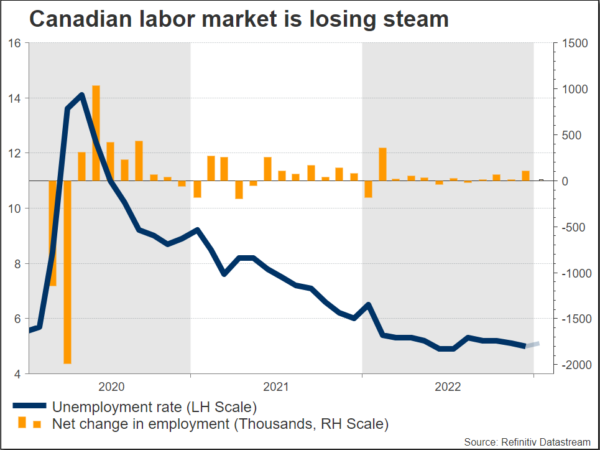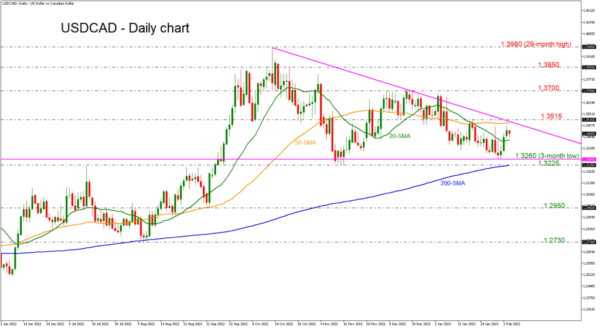The first Canadian employment report for 2023 will be published on Friday at 13:30 GMT and may not receive as much attention as usual. The Canadian dollar has been losing ground versus the US dollar recently, as the Bank of Canada (BoC) recently signaled that it may have lifted interest rates for the final time during the current tightening cycle, whilst the Federal Reserve has a couple more planned.
Canada’s labor market expected to lose steam
However, the jobs data will still be closely monitored by policymakers, since Canada’s labor market could potentially haunt those who wager that the inflation problem has been resolved. In December 2022, the economy of Canada added 104k jobs, easily surpassing market expectations, which had called for a growth of only 8k positions, with the unemployment rate inching down to 5.0%, the lowest figure since the record low of 4.9% in June and July.
Still, economists expect the labor market top have lost steam in January, and Friday’s employment report could provide evidence. The employment change is expected to mark a soft increase of 15k, lifting the unemployment rate slightly higher to 5.1%.
Will BoC continue the rate hikes?
The Bank of Canada has not totally closed the door on future rate hikes, so a significant beat in the headline employment or wage growth might propel the Canadian dollar to new highs.
Following an aggressive hike in interest rates to 4.5% in the first meeting in 2023, the highest level seen in the preceding 15 years, Governor Tiff Macklem clearly suspended the policy of tightening monetary policy. The nation’s central bank is of the opinion that they have achieved a great deal in terms of the interest rate, and that the process of disinflation has already begun. As a result, a temporary halt to the ongoing process of tightening policies appears to be appropriate now.
Investors are becoming increasingly confident that the current monetary policy being implemented by the bank is sufficiently restrictive to keep inflation under control. In addition, the median prediction for real GDP indicates a decline of 0.4% in 2023 followed by an expansion of 2% in 2024.
Even still, expectations regarding short-term inflation remain high, despite the fact that it is anticipated that they would drop dramatically later on in the year. In the meantime, the bank predicts that the economy of Canada expanded by 3.6%, but that expansion is likely to come to a standstill during the middle of the present year before picking up speed once more in the second half.
Technical outlook: USD/CAD
As regards the loonie, if the Canadian employment sounds more positive than expected on Friday, it may move dollar/loonie through the significant $1.3260 support level, which is acting as a strong obstacle of a descending triangle. A stronger-than-expected report may send the market further down to $1.3225, which overlaps with the 200-day simple moving average (SMA) at $1.3225 ahead of $1.2950.
Alternatively, dollar/loonie could revisit the $1.3515 resistance level ahead of the $1.3700 psychological mark, penetrating the pattern to the upside. The $1.3850 barrier will also be in focus before the spotlight shifts to the 29-month peak of $1.3980.
Elsewhere, the price of WTI crude oil is rising after the strong rebound off the $72.45 level as a result of the slightly weakening US dollar and hopes around China’s economic reopening.














